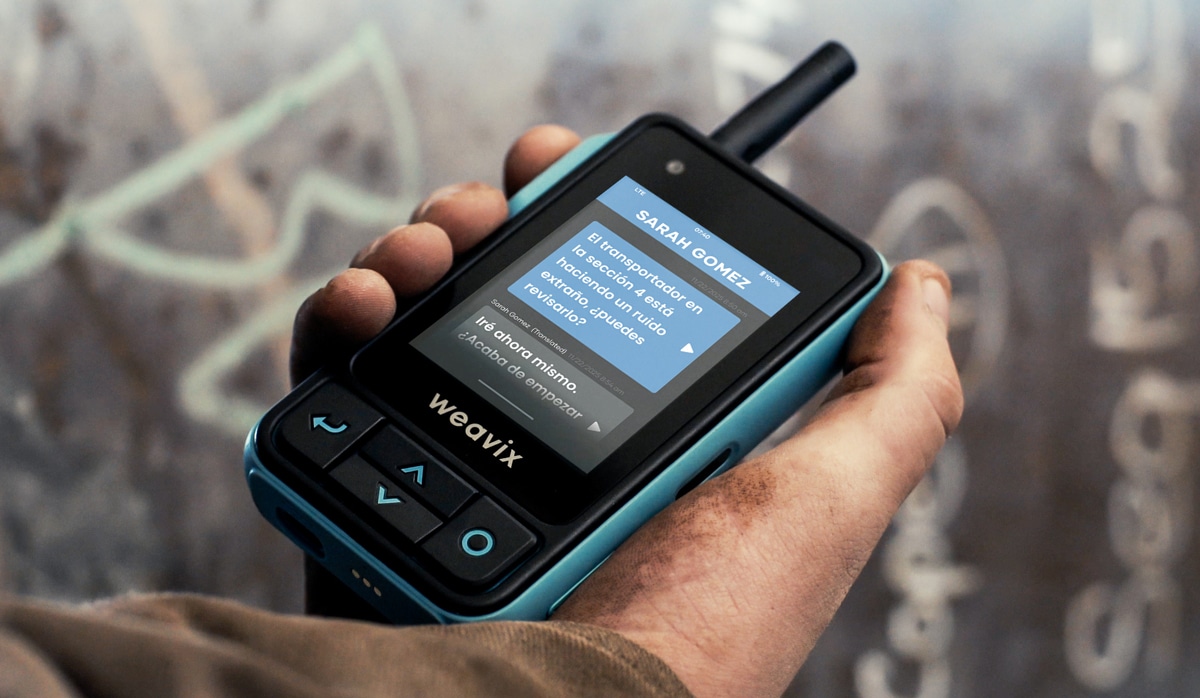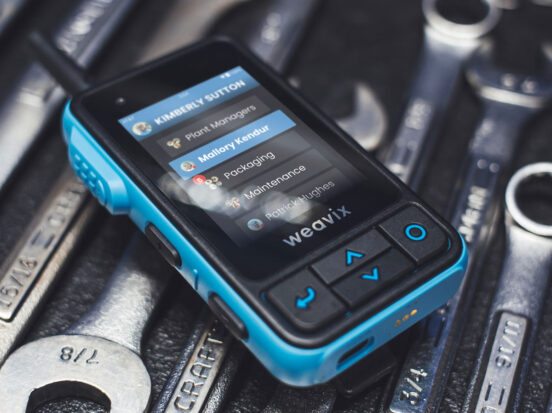TL;DR
Some vendors say “screenless” radios reduce distraction. In real operations, smart radios with screens are safer and faster because workers get visual confirmation, real-time transcription, on-screen translation, and audit-ready records. The Walt Smart Radio System delivers all of that on rugged, intrinsically safe hardware with weCare lifecycle protection.
Why Frontline Workers Need Screens
Frontline teams do not just need sound. They need context they can see.
- Identify who is talking and which channel is active
- Read live transcription when noise or hearing loss makes audio hard to follow
- See instant translation for multilingual crews
- Capture photos or video for faster troubleshooting
- Preserve audit-ready records for safety and compliance reviews
This is why we designed Walt with a display and positioned it as a frontline communications platform.
Data that moves the needle
- Customers report 15–20% less downtime after turning communication into searchable data
- 20–30% faster MTTR when crews can share photos, video, and transcripts
- 40% faster onboarding using real conversations as reusable SOPs
- Over 430 million workers worldwide have disabling hearing loss, which makes visual communication a necessity, not a luxury
- Plants with large footprints improve reliability with Simulcast coverage across lines and buildings
Accessibility matters on the floor
Many facilities employ workers who are hearing-impaired or operate in 95–105 dB environments. Screens make communication inclusive:
- Live captions for every call
- Side-by-side translation for mixed-language teams
- On-screen confirmations for critical alerts and acknowledgments
- Large-format UI that can be read with PPE
For more, see our safety solutions.

Why We Designed Walt with a Screen
When we created Walt, we studied the gaps in frontline communication. Traditional radios lacked visibility. Smartphones created distraction and compliance risks. Screenless “smart radios” still forced workers to rely only on hearing, which fails in noisy or multilingual environments.
We chose to design Walt with a rugged screen because it solves three critical problems:
- Clarity in loud plants: workers can read captions when they can’t hear.
- Inclusivity: hearing-impaired employees can participate fully.
- Accountability: supervisors get visual logs and proof of communication for safety and compliance.
In other words, the screen isn’t an add-on — it’s what turns Walt from a radio into a frontline communications platform.
Screen vs. No-Screen in daily operations
| Capability | Smart radios with screens (Walt) | Screenless radios |
|---|---|---|
| Transcription | Visible in real time and archived | Not available |
| Translation | Continuous, on-screen and archived | Audio only, hard to follow |
| Troubleshooting | Photos and video with timestamps | Voice descriptions only |
| Shift Handoff | Summaries and readable notes | Verbal notes that disappear |
| Compliance | Exportable logs and media | No records to review |
Setup and training in minutes
Walt enrolls by QR code. Channels are tied to roles, not devices. Tap-and-Go login lets any worker pick up any unit. Most crews are productive within minutes. Learn more about Push-to-Talk.
Reliability and ruggedness
“Screens break” is the myth. Walt is built for plants and yards.
- Gorilla Glass with recessed design
- IP68 dust and water resistance
- C1D2 intrinsically safe certification
- Full-shift battery life and fleet battery health in console
Lifecycle costs are predictable with weCare device replacement, batteries, and updates included.
Cost and ROI clarity
Because communication is captured and searchable, leaders can measure impact on downtime, MTTR, rework, and onboarding. When you are ready to budget, check our pricing.
Example use cases with screens
- A technician receives an alarm, opens the thread, and sees photos of the faulted component from the previous shift.
- A bilingual lead speaks Spanish. English captions appear on every worker’s screen at the same time.
- A safety manager audits an incident with time-stamped transcripts and images instead of trying to reconstruct voice chatter.
For broader context, see Walt vs. smartphones vs. two-way radio.
Final word: Why Frontline Workers Deserve Smart Radios with Screens
Screens are not a distraction. They are how modern plants communicate with clarity, accessibility, and proof. If you want measurable outcomes and predictable lifecycle costs, choose a platform built for the floor. That is why smart radios with screens are the right choice and why Walt was designed with one.


